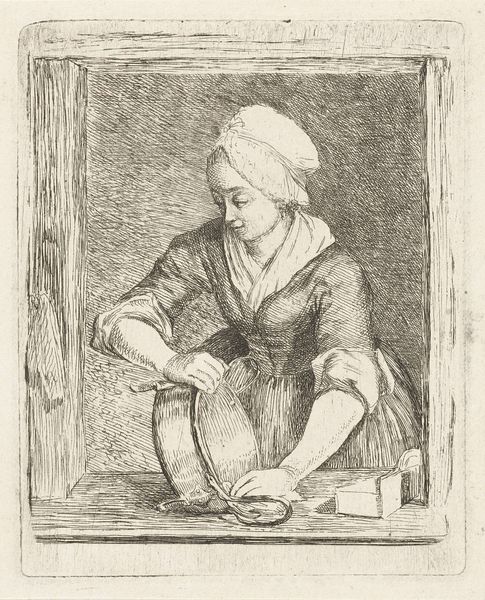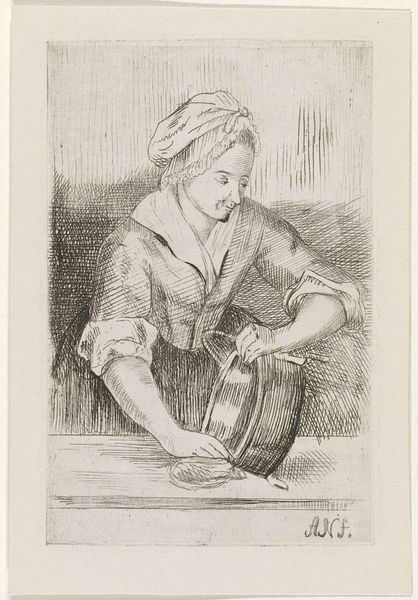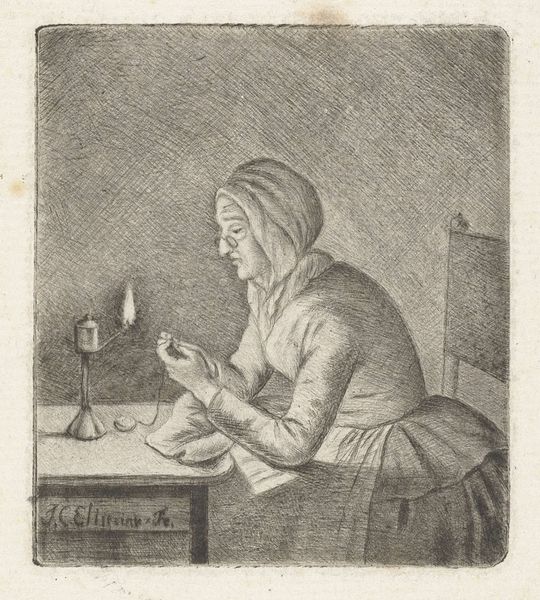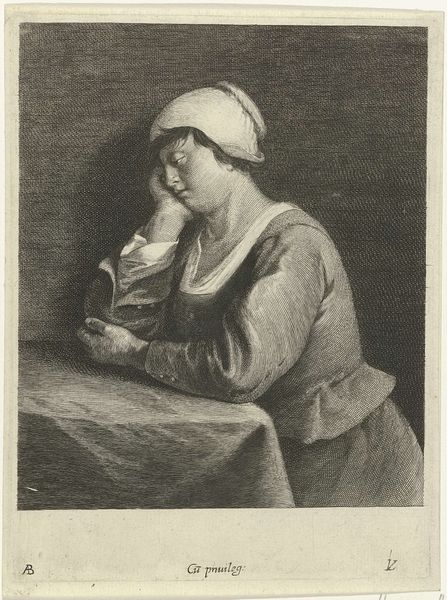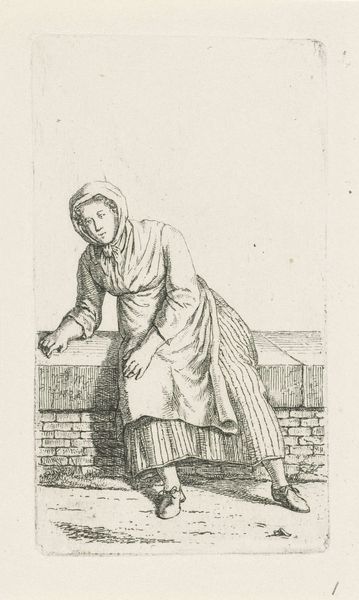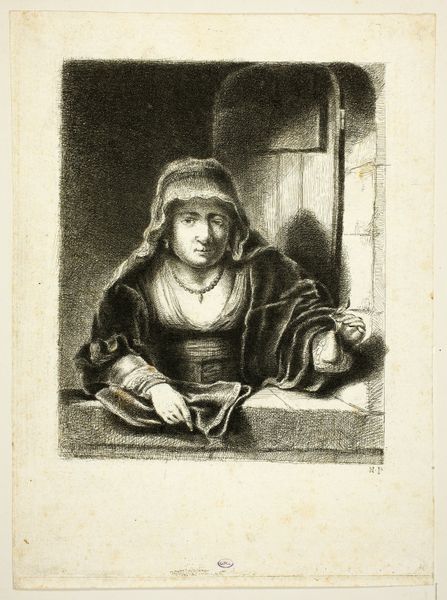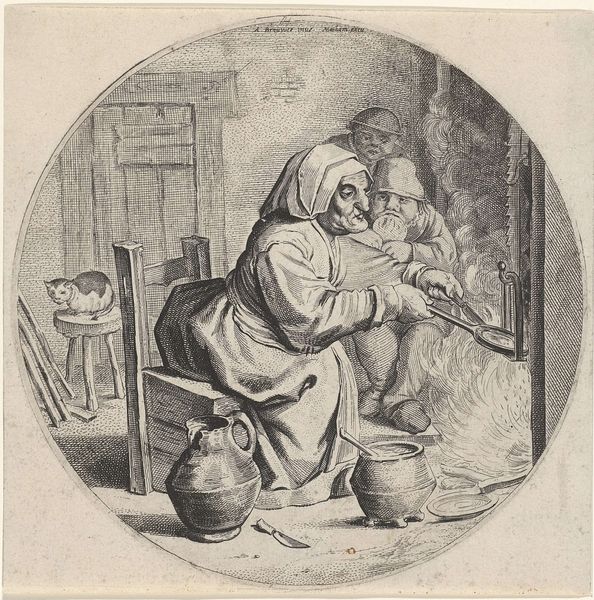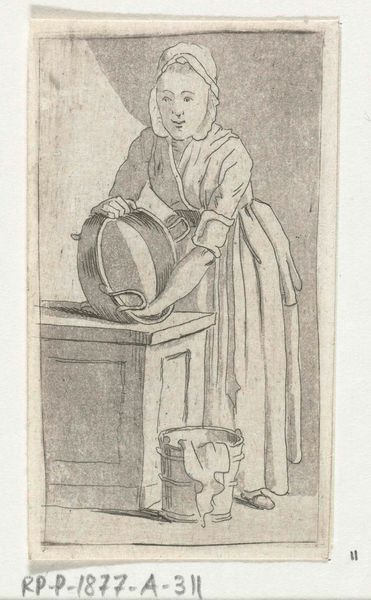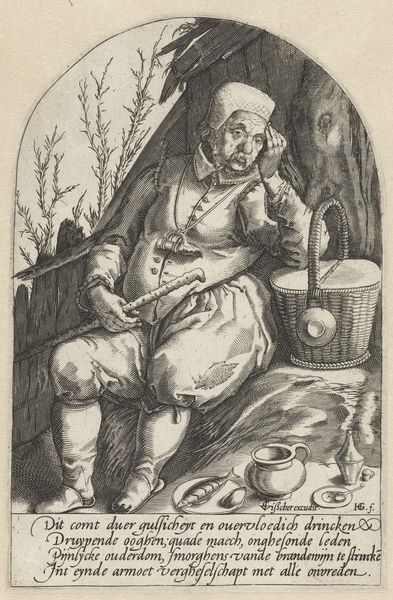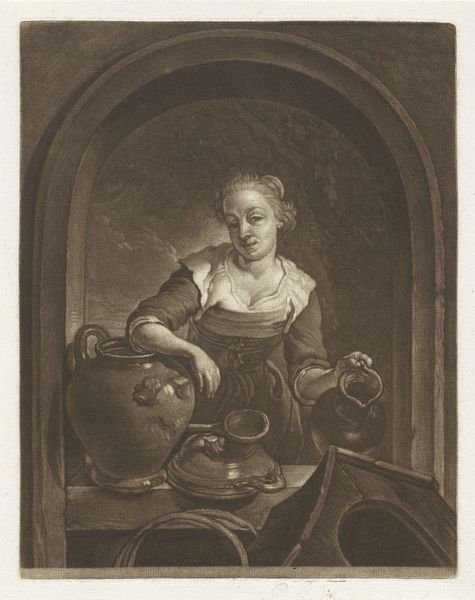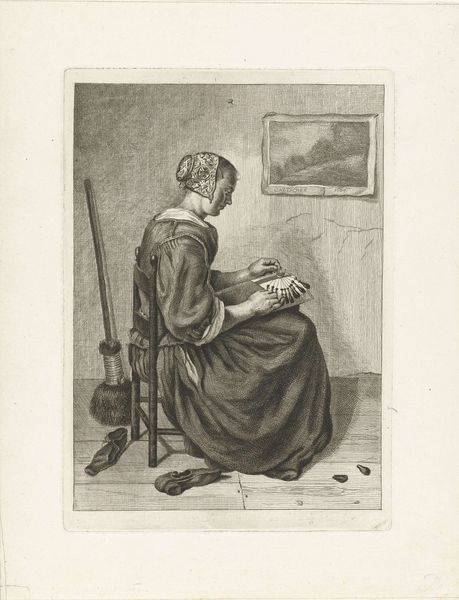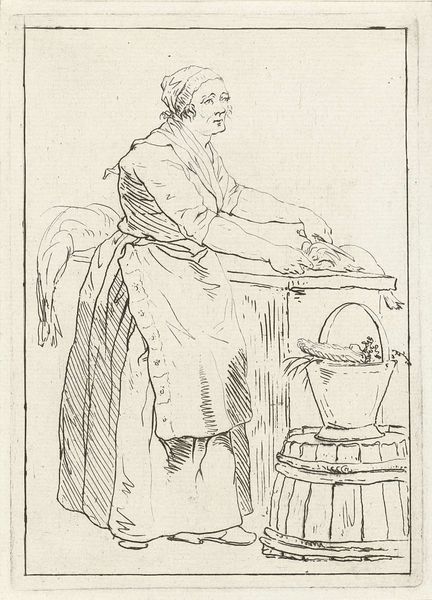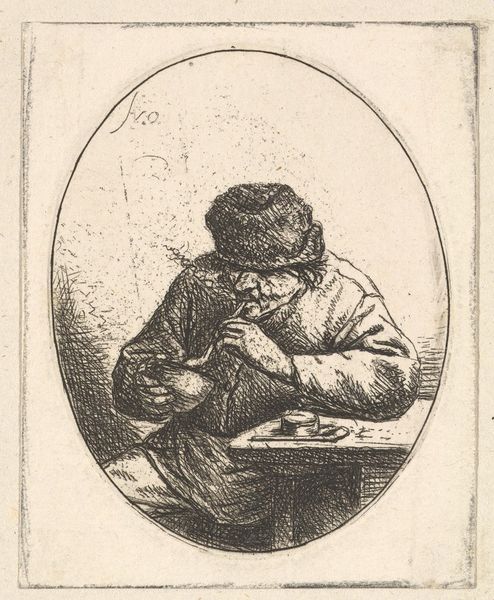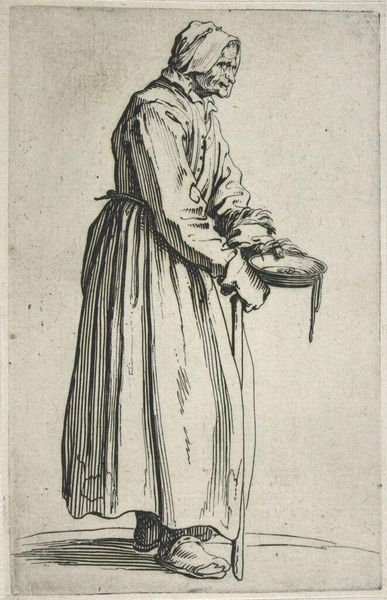
#
pencil drawn
#
toned paper
#
light pencil work
#
pencil sketch
#
old engraving style
#
personal sketchbook
#
pencil drawing
#
pen-ink sketch
#
portrait drawing
#
pencil work
Dimensions: height 117 mm, width 95 mm
Copyright: Rijks Museum: Open Domain
Curator: This is Louis Bernard Coclers’ "De ketelschuurster," created around 1780. What strikes you about it? Editor: It feels quite intimate, almost a captured moment. The light gives it a certain…domestic realism. There’s a stillness to it that is quite captivating. Curator: I find Coclers’ technique compelling. Notice the cross-hatching, the layering of lines that build form and shadow. The work with pencil suggests tonal variation and volume. The texture feels remarkably complete for what we understand is "light pencil work". Editor: Indeed. The tub she’s cleaning…the lines suggest a never-ending task for some. Consider the cultural implications; in domestic labor, cleaning often bears deep symbolism. This suggests duty, or purity, doesn't it? It also underscores societal expectations imposed on women, reducing them to the repetitive and unsung tasks of housekeeping. Curator: I can see that, but it’s also about geometric order. The square window frames the curves of her body, and the cylinder of the tub echoes her rounded features, almost reflecting light back on itself. Editor: Perhaps. And the window acting as a threshold, mediating the private indoor life and the outside world. It symbolizes limits, both physical and metaphorical, faced by women in that era. Curator: It is, in the purest form, art about representation. The window provides an internal picture frame allowing light, direction and, quite frankly, order to come to the forefront. Coclers’ attention is really about spatial relations on a micro level. Editor: I do see it. What initially appeared as a humble domestic portrayal now reveals itself to be loaded with commentary on gender roles, perhaps even challenging our notions of historical agency through its portrayal. Curator: Well, it goes to show how visual formalism can reveal, layer by layer, a deeper narrative. Editor: Absolutely, offering pathways into history we may not have initially appreciated.
Comments
No comments
Be the first to comment and join the conversation on the ultimate creative platform.
